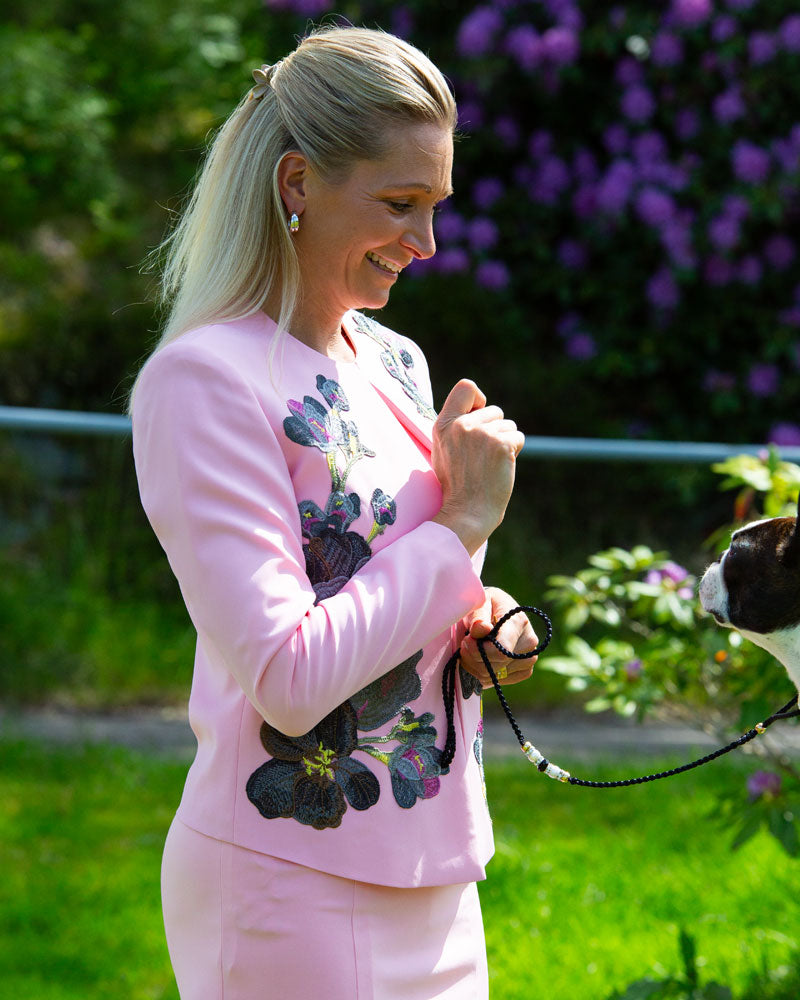
Connection Over Perfection – Every Time
Share
Show Training with Feeling: From Play to Presence in the Ring
In our previous blog post, we touched on the topic of connection with your dog, and in this post, we’ll dive even deeper into that subject.
To succeed in the show ring, both dog and handler need to feel confident, in sync—and most importantly, have fun together. It might sound obvious, but often the element of play gets lost in the pursuit of perfect movements or precisely positioned legs. In truth, all good training starts with joy.
When stack exercises become a game your dog wants to join, rather than something it has to do, motivation and confidence grow. You can’t force a dog to play—but you can invite them. That’s where the partnership begins. When you let go of pressure and let your body and voice express happiness, a different kind of communication opens up—one built on relationship and feeling rather than technique.
Achieving good balance in your dog isn’t always about “stacking” or positioning. Many dogs find their natural expression when allowed to move freely. Sometimes our job is simply not to interfere. Instead, focus on your own posture. What happens if you move more lightly, play more? Suddenly, you become a team—and the connection becomes clear, even to those watching.
Here’s a simple rule: see the training as your own. When you develop your body awareness, your energy, and your way of communicating, your dog will follow. They mirror you, whether you realize it or not. Every time something doesn’t go as planned, ask yourself: What did I do that influenced this? This isn’t criticism—it’s the key to progress.
Movement and Attitude Go Hand in Hand
In training, it’s often better to let your dog move at a gallop and jump rather than fine-tune every detail in trot. The joy and energy sparked by galloping can’t be created through still, posed positions. When your dog jumps, it naturally adopts a better posture and attitude—something hard to achieve through technique alone. Few things look as impressive as a spontaneous, confident stance right after a leap—powered by the right energy from both dog and handler.
From Training to the Real Deal
It’s common for everything to go perfectly during training but then fall apart at the actual show. Suddenly, old habits resurface, the dog becomes unsure, and you get tense. This is completely normal—and understandable. The difference isn’t in what you know, but in what you can bring forth when it counts.
Mental stress, the desire for a specific outcome, the dog’s reaction to the flood of stimuli—there’s a lot that affects performance. Instead, try to focus on a few key things you want to improve and have practiced.
For example, during the “stack” moment:
-
Think about your chin—your posture affects the dog’s.
-
Feel your hips—where you place your weight makes a difference.
-
Set your center of gravity—energy flows where you are.
With this kind of structure, it’s easier to build new habits in yourself and add complexity once some parts start to feel natural.
Clothing Makes More Difference Than You Think
It’s easy to underestimate how much your outfit affects your experience in the ring. Many have felt that creeping discomfort—not just from nerves or pressure, but from something as simple as a stiff jacket or a dress that won’t stay put. When your movement is restricted and your focus scattered, it becomes harder to perform at your best.
That feeling was part of the inspiration behind Canis Certo—creating clothes that actually work in motion, that follow your body and support rather than resist. When you don’t have to think about what you’re wearing, you have more room to be fully present with your dog—and that’s where true connection happens.
To Finish
Remember, dog shows are about connection. The person who grows the most is often the one having the most fun. Let that show—and the results will follow.
